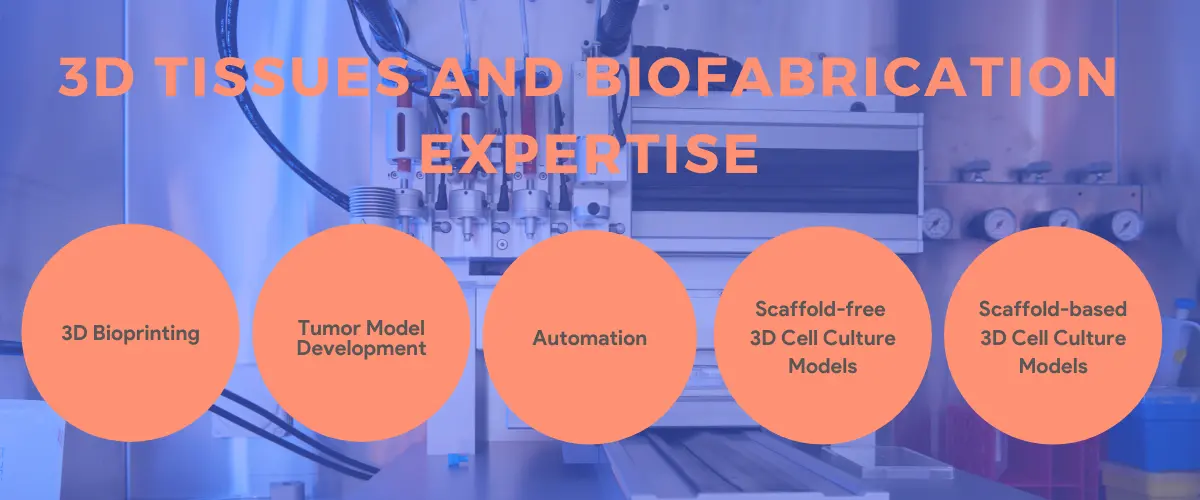Section of 3D Tissues and Biofabrication

«I am fascinated by the development of novel tissue models for clinical and industrial applications.»
The goal of our research activities is to culture human cells under physiological conditions. To do so, we employ different three-dimensional (3D) cell culture systems. Depending on the application the cells are cultured in scaffold-free or in scaffold-based systems. We have expertise in bioprinting for many years and use the promising technology successfully in industry-driven projects. Bioprinting allows producing living tissues in a layer-by-layer mode by depositing cells, (extracellular) matrix and bioactive molecules precisely in 3D space. The 3D tissues are developed for drug and substance testing, as well as for personalized medicine.
Our developments are used in areas such as
- Bioprinting and bioink development
- Primary human cell cultures (healthy, cancer)
- Scaffold-free and scaffold-based 3D cell cultures
- Automated 3D cell cultures
- Development of fluidic cell culture systems
- Tissues of interest : muscle, tendon, liver, kidney, skin, osteosarcoma
- Applications : drug and substance testing, personalized medicine
Our research laboratories provide a modern infrastructure and methodological expertise.
We offer our project partners a wide range of cooperation opportunities. Customized solutions are provided in the frame of Bachelor’s and Master’s theses and directly or third party funded projects (Innosuisse, SNF, Foundations, EU projects).
The competence centre "Tissue Engineering for Drug Development and Substance Testing" TEDD was founded in 2010 by the members of the section “Tissue Engineering” and provides a platform combining knowledge, technologies and partners from research and industry.
Publications
-
Kopanska, Katarzyna; Rimann, Markus,
2020.
TEDD Competence Centre Report 2019.
Chimia.
74(5), pp. 426-428.
Available from: https://doi.org/10.2533/chimia.2020.426
-
Nosswitz, Michael; Teale, Misha; Mathes, Stephanie; Venturato, Andrea; Gasser, Angelines,
2019.
Evaluation of anodized surfaces designed for improved soft tissue integration.
Foundation for Oral Rehabilitation.
Available from: https://www.for.org/en/learn/scientific-article/evaluation-anodized-surfaces-improved-soft-tissue-integration
-
Randall, Matthew J.; Jüngel, Astrid; Rimann, Markus; Wuertz-Kozak, Karin,
2018.
Advances in the biofabrication of 3D skin in vitro : healthy and pathological models.
Frontiers in Bioengineering and Biotechnology.
6(154), pp. 154.
Available from: https://doi.org/10.3389/fbioe.2018.00154
-
Laternser, Sandra; Keller, Hansjoerg; Leupin, Olivier; Rausch, Martin; Graf-Hausner, Ursula; Rimann, Markus,
2018.
A novel microplate 3D bioprinting platform for the engineering of muscle and tendon tissues.
SLAS Technology: Translating Life Sciences Innovation.
23(6), pp. 599-613.
Available from: https://doi.org/10.1177/2472630318776594
-
Raghunath, Michael; Rimann, Markus; Kopanska, Katarzyna S.; Laternser, Sandra,
2018.
TEDD annual meeting with 3D bioprinting workshop.
Chimia.
72(1/2), pp. 76-79.
Available from: https://doi.org/10.2533/chimia.2018.76
